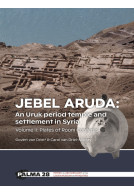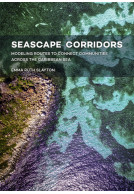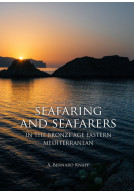Google Books previews are unavailable because you have chosen to turn off third party cookies for enhanced content. Visit our cookies page to review your cookie settings.
Une maison sous les dunes : Beg ar Loued, Île Molène, Finistère (Paperback)
Identité et adaptation des groupes humains en mer d’Iroise entre les IIIe et IIe millénaires avant notre ère
Imprint: Sidestone Press
Pages: 800
Illustrations: 328fc/146bw
ISBN: 9789088903809
Published: 28th November 2018
Script Academic & Professional
Pages: 800
Illustrations: 328fc/146bw
ISBN: 9789088903809
Published: 28th November 2018
Script Academic & Professional
You'll be £100.00 closer to your next £10.00 credit when you purchase Une maison sous les dunes : Beg ar Loued, Île Molène, Finistère. What's this?
+£4.99 UK Delivery or free UK delivery if order is over £40
(click here for international delivery rates)
Order within the next 7 hours, 2 minutes to get your order processed the next working day!
Need a currency converter? Check XE.com for live rates
(click here for international delivery rates)
Order within the next 7 hours, 2 minutes to get your order processed the next working day!
Need a currency converter? Check XE.com for live rates
Depuis 2001, des recherches archéologiques sont menées dans l’archipel de Molène. Ce secteur s’avère particulièrement riche en vestiges du Néolithique et de l’Age du Bronze. Une concentration exceptionnelle de monuments mégalithiques y a été mise en évidence.Plusieurs habitats sont attestés par la présence de dépotoirs domestiques. A la pointe de Beg ar Loued (île Molène), l’un de ses amas coquilliers fit l’objet d’un premier sondage en 2003 marquant le début d’une série de campagnes de fouilles. Dès la deuxième année, celle-ci prit un tournant décisif avec la reconnaissance des premiers murs en pierres sèches, correspondant à un bâtiment conservé sous la dune. Pendant près d’une décennie, ce site fit l’objet de fouilles par une équipe interdisciplinaire. Les données obtenues par l’étude de l’habitat renseignent sur la chronologie des différentes occupations du site et permettent de documenter la transition IIIe-IIe millénaire avant notre ère, fourchette chronologique encore très mal connue dans la moitié nord de la France.Outre l’apport d’une chronologie relative, l’approche architecturale donne une meilleure compréhension des choix ayant présidé aux différentes phases de construction du bâtiment occupé pendant plus de trois siècles. Les éléments de la culture matérielle (céramique, lithique, métallurgie) viennent aussi soulever le voile sur une période essentiellement connue en Bretagne à travers les monuments funéraires.Pour la première fois dans cette région, grâce à la conservation des vestiges organiques, il est permis d’esquisser l’économie (élevage, agriculture pêche, collecte des coquillages, etc.) des hommes ayant occupé les rivages de la mer d’Iroise. Leur mode de vie suggère une communauté sédentaire à économie vivrière, exploitant l’ensemble des ressources insulaires sans pour autant être coupée du continent (style céramique, métallurgie).Afin de mieux comprendre l’évolution globale de cet environnement insulaire, de nouvelles recherches ont été menées sur les variations du niveau marin corrélées à l’étude du paysage végétal, de la géomorphologie, de la géologie et de la faune.English abstractSince 2001, archaeological research has been conducted in the Molène Archipelago, an area that is particularly rich in remains from the Neolithic and the Bronze Age, with an exceptional concentration of megalithic monuments. Several settlements are attested by the presence of domestic refuse dumps. At the point of Beg ar Loued (Molène Island), one of those shell middens was the object of an initial sondage in 2003, and that marked the beginning of a long series of excavations. Fieldwork took a decisive turn during the second year with the recognition of the first dry stone walls, belonging to a building preserved within the sand dunes. For nearly a decade, this site has been excavated by an interdisciplinary team. The data that have been obtained from this fieldwork provide information on the chronology of the various periods of occupation of the site and help to document the 3rd–2nd millennium BC transition, a period still largely unknown in the northern half of France. In addition to providing a relative chronology, the architectural approach gives us a better understanding of the choices that governed the different construction phases of the building, which was occupied for over three centuries. The elements of material culture (pottery, lithics, metalwork) also shed light on a period essentially known in Brittany through its funerary monuments. For the first time in this region, thanks to the preservation of organic remains, it is possible to sketch the lifestyle (livestock management, agriculture, fishing, shell gathering, etc.) of the people who occupied the shores of the Iroise Sea. In order to understand better the overall trends in this insular environment, new researches have been carried out on sea level changes in tandem with the study of the palaeoenvironment, geomorphology, geology and wildlife.
Other titles in Sidestone Press...















